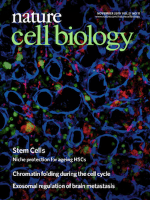
NATURE CELL BIOLOGY
Scope & Guideline
Unraveling the Mysteries of Life at the Cellular Level
Introduction
Aims and Scopes
- Anatomical Studies and Variations:
The journal extensively covers anatomical studies, focusing on variations in human anatomy that hold clinical significance. This includes cadaveric studies, imaging studies, and histological examinations that enhance understanding of human structures. - Pathophysiology and Disease Mechanisms:
Research on the cellular and molecular mechanisms underlying various diseases is a core focus. This includes studies on how anatomical variations contribute to disease processes and therapeutic outcomes. - Innovative Methodologies:
The journal promotes the use of advanced methodologies such as imaging techniques (e.g., MRI, CT scans), histological analysis, and 3D modeling to explore anatomical structures in greater detail. - Clinical Implications of Anatomical Findings:
Each study emphasizes the clinical relevance of anatomical findings, aiding in surgical planning, diagnosis, and treatment strategies in various medical fields. - Integrative Approaches:
The journal supports integrative research that combines anatomical studies with molecular biology, genetics, and bioinformatics to understand complex biological systems.
Trending and Emerging
- Interdisciplinary Approaches:
There is a growing trend towards interdisciplinary research that combines anatomy with fields such as molecular biology, genetics, and bioinformatics, fostering a deeper understanding of complex biological interactions. - Focus on Regenerative Medicine and Stem Cells:
Research on stem cells and their applications in regenerative medicine is gaining prominence, reflecting an interest in harnessing cellular mechanisms for therapeutic purposes. - Mechanisms of Disease and Therapeutic Targets:
An increasing number of studies are exploring the cellular and molecular mechanisms underlying diseases, identifying potential therapeutic targets, and evaluating the efficacy of novel treatments. - Application of Advanced Imaging Techniques:
The use of advanced imaging techniques such as 3D reconstruction and high-resolution imaging is on the rise, enhancing the ability to visualize and analyze anatomical structures in detail. - Public Health and Anatomical Education:
There is a notable increase in publications focusing on public health implications and innovative approaches to anatomical education, particularly in response to the challenges posed by the COVID-19 pandemic.
Declining or Waning
- Traditional Anatomical Studies:
While anatomical studies remain important, the trend towards more integrative and interdisciplinary approaches has led to a decline in purely descriptive anatomical research without clinical applications. - Basic Histological Techniques:
The reliance on basic histological techniques is diminishing as newer, more advanced imaging and molecular techniques gain traction, providing deeper insights into cellular structures and functions. - Limited Focus on Non-Human Studies:
Research involving non-human anatomical studies or comparative anatomy is becoming less frequent, as there is a stronger emphasis on human studies that have direct clinical relevance. - Single-Factor Analyses:
Studies that analyze single factors in isolation are being overshadowed by research that examines multifactorial influences on anatomy and disease, reflecting a trend towards more holistic approaches.
Similar Journals

ANATOMICAL SCIENCE INTERNATIONAL
Bridging Basic Anatomy and Clinical ApplicationsANATOMICAL SCIENCE INTERNATIONAL is a distinguished peer-reviewed journal published by SPRINGER, focusing on the field of anatomy and its applications within the broader spectrum of medical science. With an ISSN of 1447-6959 and an E-ISSN of 1447-073X, this journal provides a robust platform for the dissemination of innovative research and findings from around the globe, featuring studies that span from basic anatomy to advanced clinical applications. As of 2023, it holds a respectable Q2 rank in Anatomy and a Q3 rank in the miscellaneous category of Medicine, reflecting its growing influence and contribution to the field, with Scopus rankings placing it in the 59th percentile of Medicine - Anatomy journals. Although ANATOMICAL SCIENCE INTERNATIONAL is not an Open Access journal, it remains indispensable for researchers, professionals, and students who seek to stay at the forefront of anatomical science research. The journal's ongoing commitment to excellence is evident through its continuous publication, spanning from 2002 and projected through 2024, making it a vital resource for those aiming to advance their knowledge and practice in anatomy.

CELLULAR AND MOLECULAR BIOLOGY
Connecting Researchers in Cellular DynamicsCellular and Molecular Biology is a prominent academic journal published by C M B ASSOC, specializing in the dynamic fields of cellular and molecular biology. Established in 1977, this journal has consistently aimed to disseminate groundbreaking research that contributes to our understanding of biochemical processes, cell dynamics, and molecular mechanisms governing life. With its ISSN 0145-5680 and E-ISSN 1165-158X, the journal plays a vital role in the exchange of innovative ideas, evidenced by its coverage of research from 1977 to 2024. Although currently categorized in the Q4 quartile for major disciplines such as Biochemistry and Cell Biology, it is dedicated to fostering the development of the field by welcoming submissions that challenge the conventional understanding and lead to novel insights. Researchers and academics looking to contribute to or stay updated in the rapidly evolving landscape of molecular biology will find this journal a valuable resource for connecting with a global community of scientists.
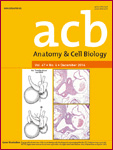
Anatomy & Cell Biology
Bridging Disciplines for a Deeper Understanding of BiologyAnatomy & Cell Biology is a prominent academic journal published by MEDRANG, dedicated to advancing the fields of anatomy and cell biology through the dissemination of high-quality research. With an ISSN of 2093-3665 and an E-ISSN of 2093-3673, this journal serves as a vital resource for researchers and professionals interested in understanding the intricate processes of human and model organism anatomy and cellular functions. Based in South Korea, Anatomy & Cell Biology has gained recognition with a 2023 Category Quartile ranking of Q2 in Anatomy and continues to foster academic collaboration and innovation since its inception in 2014. With a focus on interdisciplinary studies, the journal publishes essential findings that contribute to the realms of histology, developmental biology, and neuroscience. Although the journal operates on a subscription model, it remains committed to providing valuable insights and a platform for scholarly dialogue among those in the biological sciences. Researchers and students aiming to remain at the forefront of these dynamic fields will find Anatomy & Cell Biology an indispensable part of their academic journey.
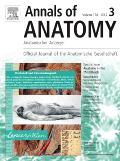
ANNALS OF ANATOMY-ANATOMISCHER ANZEIGER
Pioneering Research in Anatomy and DevelopmentANNALS OF ANATOMY - ANATOMISCHER ANZEIGER is a premier journal published by Elsevier GmbH, focusing on the intricacies of anatomical research and developmental biology. Established in 1992, this journal has continuously contributed to the advancement of knowledge in these fields, boasting an impressive impact factor that positions it within the Q2 quartile for Anatomy and a respectable ranking in Developmental Biology. With a Scopus ranking of #17 in Anatomy and #45 in Developmental Biology, ANNALS OF ANATOMY stands as a critical resource for researchers, professionals, and students alike, fostering scholarly dialogue and innovation. While currently not an open-access journal, its comprehensive scope and rigorous peer-review process ensure that the research published is of the highest quality. Based in Germany, this journal addresses a diverse range of topics and remains an essential platform for disseminating significant findings in the anatomical sciences and their interconnections with other biological fields.

International Journal of Molecular and Cellular Medicine
Exploring Innovations in Cell Biology and GeneticsInternational Journal of Molecular and Cellular Medicine, published by the CELLULAR & MOLECULAR BIOLOGY RESEARCH CENTER in Iran, is a leading platform dedicated to advancing research in various domains of molecular and cellular sciences. With an ISSN of 2251-9637 and E-ISSN 2251-9645, this journal features a rigorous peer-review process that ensures the publication of high-quality, impactful research. Spanning from 2016 to 2024, it is categorized in the third quartile (Q3) in Biochemistry, Cell Biology, Genetics, and Molecular Biology, and second quartile (Q2) in Biotechnology, underlining its significance in the scientific community. Although currently non-open access, it maintains credible visibility through Scopus rankings, reflecting its importance in fields such as Biochemistry, Molecular Medicine, and Genetics, where it holds respectable ranks and percentiles. This journal aims to foster collaboration and knowledge dissemination among researchers, professionals, and students in the pursuit of enhancing understanding and innovation in molecular and cellular medicine.
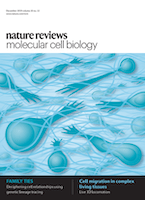
NATURE REVIEWS MOLECULAR CELL BIOLOGY
Exploring groundbreaking insights in molecular processes.NATURE REVIEWS MOLECULAR CELL BIOLOGY, published by NATURE PORTFOLIO, stands as a seminal journal in the fields of cell and molecular biology, with a significant impact factor that underscores its influence and reputation within the scientific community. Established in 2000 and continuing its legacy into 2024, this journal delivers comprehensive reviews that synthesize current knowledge and advancements in molecular and cellular processes. Respected for its high-quality articles, it has maintained a prestigious Q1 ranking in both Cell Biology and Molecular Biology categories as of 2023. With an exceptional Scopus ranking, taking the top position in its category, it attracts a readership of prominent researchers, professionals, and students eager to stay abreast of groundbreaking discoveries and methodologies. Although it does not offer Open Access, subscribers benefit from exclusive access to vital insights that foster innovative research approaches and advancements in the life sciences. The journal’s objective is to bridge the gap between research and application, providing indispensable resources to its audience while contributing to the global conversation on molecular and cellular biology.
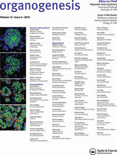
Organogenesis
Advancing the Frontiers of Developmental Biology.Organogenesis is a leading journal published by Taylor & Francis Inc, dedicated to advancing the field of developmental biology and regenerative medicine. With an ISSN of 1547-6278 and E-ISSN 1555-8592, this journal spans an extensive research scope that includes embryology, transplantation, and biomedical engineering, distinguishing itself as a crucial platform for researchers and practitioners alike. Its impact is reflected in its performance across various categories in 2023, earning Q3 rankings in Biomedical Engineering and Embryology, Q4 in Developmental Biology, and Q2 in Transplantation, showcasing its reputable standing among peer journals. Moreover, with Scopus rankings indicating strong positioning in the fields of medicine and biochemistry, Organogenesis is essential for those looking to publish or stay updated on pioneering research. The journal facilitates rigorous peer-review and offers a forum for disseminating innovative findings, making it an invaluable resource for academics, professionals, and students committed to understanding the complexities of organism development.

JOURNAL OF CELLULAR AND MOLECULAR MEDICINE
Catalyzing Progress in Health through Molecular InsightsJournal of Cellular and Molecular Medicine, published by Wiley, stands at the forefront of research excellence in the fields of cell biology and molecular medicine. With an impressive impact factor reflected in its 2023 Q2 category ranking for both Cell Biology and Molecular Medicine, this journal provides a vital platform for researchers and professionals alike, fostering innovative findings and groundbreaking discoveries since its inception in 2000. Maintaining an open access policy since 2012, the journal ensures that knowledge is freely disseminated, promoting collaboration and progress across the scientific community. With robust rankings in the Scopus database, including a position within the top 85th percentile in Molecular Medicine, the journal remains committed to advancing understanding of cellular functions and their implications in health and disease. Researchers, professionals, and students will find a treasure of high-quality articles and reviews that not only catalyze academic dialogue but also contribute significantly to practical applications in the life sciences.

BMC Molecular and Cell Biology
Advancing the frontiers of molecular and cell biology.BMC Molecular and Cell Biology is a forward-thinking open-access journal published by BMC, specializing in the vital fields of molecular biology and cell biology. Since its inception in 2019, the journal has carved a niche for itself, ranking in the Q3 quartile in both Cell Biology and Molecular Biology categories as of 2023. With an ISSN of N/A and an E-ISSN of 2661-8850, the journal provides a platform for groundbreaking research, high-quality reviews, and innovative methodologies. Situated in the United Kingdom, BMC Molecular and Cell Biology promotes a diverse range of studies, addressing fundamental questions in biology that resonate with both experts and new researchers alike. The journal's commitment to open access ensures that valuable findings are readily available to the global scientific community, fostering collaboration and knowledge-sharing across disciplines. Researchers aiming to contribute to the field of cell and molecular biology will find this journal an indispensable resource for both publishing and staying informed on the latest advances.
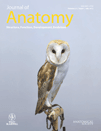
JOURNAL OF ANATOMY
Unveiling the Secrets of Anatomy Since 1945The JOURNAL OF ANATOMY, published by Wiley, is a premier international journal dedicated to advancing the field of anatomy and its related disciplines. With the ISSN 0021-8782 and E-ISSN 1469-7580, this esteemed journal has been at the forefront of anatomical research since its inception in 1945. Renowned for its rigorous peer-review process, the journal has earned a prestigious impact factor reflecting its high standard of scholarly work. This includes a 2023 Quartile ranking of Q1 in Anatomy, underscoring its prominence among top-tier publications. The journal’s diverse scope encompasses key fields such as cell biology, developmental biology, and molecular biology, making it an essential resource for researchers and practitioners alike. Publishing cutting-edge research and reviews, the JOURNAL OF ANATOMY aims to foster innovative scientific discourse and exploration within the anatomical sciences, solidifying its role as a vital hub for the global anatomical community.